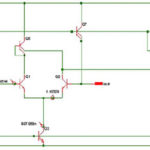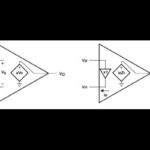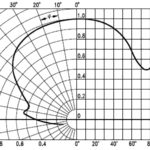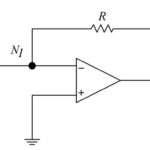Analog bootstrap circuits are traditionally ones where output is fed back to the input, usually to increase input impedance. This can be to minimize either the resistive or reactive (usually capacitive) components of the input impedance or both. The term is now also used with MOSFET drivers where a capacitor is charged and used to pump up a voltage for gate drive. This article is concerned with reducing the effect of the gate-drain capacitance of a JFET in a transimpedance amplifier. The technique can also be used for bipolar circuits or HEMT or GaAsFET transistors and can be extended to also reduce the effects of photodiode capacitance.
A typical idealized JFET input transimpedance amplifier could be represented like this:

I1, R3 and C1 represent the photodiode with some dark current (leakage) and 0.5pF of capacitance. The JFET is shown as a source follower with an ideal gain stage E2 following it. V2 is used to level shift for biasing. This arrangement would give around 96MHz of bandwidth. One reason for using a source follower for the first stage rather than a common source amplifier is that you will need a unity gain stage for bootstrapping but also because the source follower will have a wider bandwidth than a common source amplifier. The disadvantage is that the noise performance of a common source based circuit is likely to be better than one based on a source follower.
Adding a bootstrap as shown below will roughly double the bandwidth to 183MHz.

The bootstrapping can be further extended to include the photodiode. This can be particularly helpful where the photodiode has a large capacitance.

For example, with 5pF of photodiode capacitance, bootstrapping the JFET has very little effect because the input capacitance is dominated by the photodiode not the JFET. However, bootstrapping the photodiode will increase the bandwidth from 24MHz to 81MHz. Then bootstrapping the JFET will further increase that to 130MHz because the effective photodiode capacitance has been reduced and the JFET gate-drain capacitance is significant again. Bootstrapping the JFET on its own will only increase the bandwidth from 24MHz to 27MHz. Real-life circuits will not be quite as good depending on how they are implemented.
The unity gain buffer required for the bootstrap might be implemented with an emitter follower in which case its gain will be less than unity. However, if an opamp were used then the performance would be better. Similarly, the gain stage will not have infinite bandwidth. Overall though, the technique is very useful in trying to design high transimpedance, high bandwidth transimpedance amplifiers for photodiodes, including avalanche photodiodes. The techniques can be used with custom IC-based implementations as well as discrete circuits, and for circuits with discrete devices mixed with opamps.
As with any circuit of this nature, the circuit noise should also be analyzed as well, and transient simulations carried out to check there are no undesirable effects under certain circumstances/conditions. This would include the effect of a significant DC current in the photodiode if that was a possible operating condition for the circuit.







Leave a Reply
You must be logged in to post a comment.